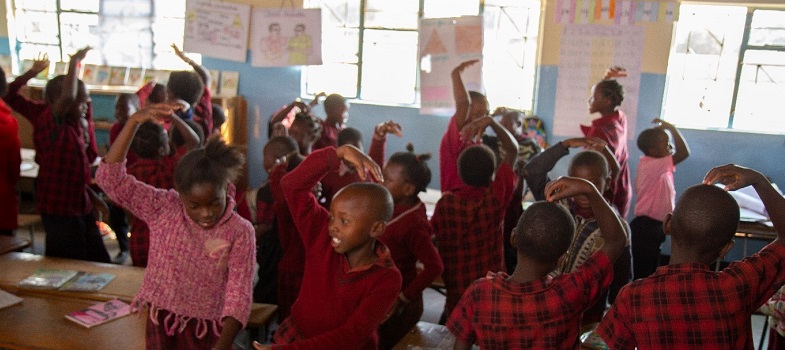Training guide
5. Involving all learners
5.1. Involving all learners in practice
Activity 2.11: Making the classroom inclusiveRead the example of learner Grace and what her teacher Mariam did to ensure Grace could attend lessons more regularly. As you read, make notes in your Teacher Notebook of the aspects you found important in the reading. Grace is in Grade 4 and has a bone disease which has led to several incidences of broken bones – arm, wrist, leg – since she started school. The seating in her classroom is not ideal for a child with her disability and she has frequently been absent. Mariam, the Grade 4 teacher, realised that Grace needed a different type of chair in order to enable her to comfortably attend school. As Grace is very small for her age, she brought several different chairs from the infant classrooms and found one that was much more comfortable for Grace to sit in for extended periods. Over the past few months, Grace has had a much better attendance record and is more involved in school life. |
|
Did you notice...
|
Classroom Example 2.5: Understanding learnersListen to the audio below or read the transcript about the experience of teacher Betty with her learner Charles. Make notes in your Teacher Notebook:
Audio transcript Betty is a Grade 5 teacher in Kabwe. There are 48 learners in her class, and she does not find it easy to know them all. Charles is a learner in her class. He is noisy and volunteers frequently. Because of this behaviour Betty had assumed that he was one of the brighter children. However, during some group work, she noticed that Charles was not contributing very much. As she was walking around the class observing her learners working in their groups, she asked him some questions and realised that he could not read the sentence written out on a card as part of the task. Betty was careful not to draw attention to him as she realised he did not feel good about this. Over the next few weeks, Betty made more effort to talk to Charles and find out a bit more about him. She realised that he was struggling with the work but did not want his friends to know. He put his hand up a lot to answer short closed questions but avoided the harder questions. He was very anxious to please, but too scared to ask for help. Betty then decided to pair Charles with one of the good readers in the class and purposefully organised pair work activities in the next few weeks where the better reader could help him. Charles soon began to grow in confidence, his reading improved, and he started to participate better in all activities. |
|
Did you notice...
|
